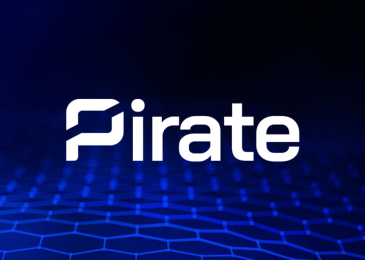Google’s search algorithm didn’t always have such a keen understanding of what most people find valuable. It’s evolved quite a bit over the years. Our goal today is to paint a more in depth picture of that evolution.
Below is a to-date list of the most impactful Google algorithm updates since 2003. We’ll keep adding to this list as time rolls along.
Let’s hop in!
Google Fred Update – March 2017

Google’s “Fred” Update (unofficially named) occurs in March of 2017. Its purpose is to crack down on sites that prioritize monetization over user experience. The name “Fred” is arbitrary, and is jokingly assigned by Google analytics expert Gary Illyes. The results of the update are not arbitrary.

Sites with low quality user engagement—thin content, content heavily geared toward conversions, UX barriers (popups, navigational obstacles) and aggressive on-page advertising tactics—lose organic search traffic overnight. Some sites report up to 90% traffic loss.
Google Intrusive Interstitial Penalty – January 2017

Google announces the Intrusive Interstitial Penalty in August of 2016, writing, ”Pages where content is not easily accessible to a user on the transition from the mobile search results may not rank as highly.” The update itself rolls out in January 2017, and cracks down on sites with intrusive mobile interstitials. Google gives the following examples of techniques that will negatively impact a page’s organic search ranking:
1. Showing a popup that covers the main content, either immediately after the user navigates to a page from the search results, or while they are looking through the page.
2. Displaying a standalone interstitial that the user must dismiss before accessing the main content.
3. Using a layout where the above-the-fold portion of the page appears similar to a standalone interstitial, but the original content has been inlined underneath the fold.
Glenn Gabe tracks the ramifications of the Intrusive Interstitial Penalty, and records some interesting insights
Google Penguin 4.0 – September 2016

Google announces Penguin 4.0 in September of 2016. The two main revisions to the original Penguin update are:
1. Penguin goes real time, and becomes a part of Google’s core algorithm.
2. Penguin now devalues “spammy” links at a granular level, reversing earlier-enforced site-wide penalties.
Sites that see search visibility reductions after Penguin updates 1.0-3.0 now see improved rankings—so long as they’ve taken the necessary steps to clean up their spammy links.
Google “Possum” Update – September 2016

Unannounced and unconfirmed by Google, Possum gets its name from the impact it has on Google My Business listings. Google’s newly refined location filter filters out businesses based on certain criteria. Thus, the listings themselves “play possum.” Possum impacts local search rankings in the following ways:
1. Businesses outside of a city’s limits experience higher rankings for local search keywords. Prior to Possum, businesses not technically within a city’s limits have a difficult time ranking well for those keywords.
2. A new location filter filters out locations that share the same address.
3. The physical location of the person typing the query has a larger impact on results.
Google RankBrain – October 2015

Bloomberg breaks the news that RankBrain, a machine-learning artificial intelligence system, has been incorporated into Google’s core algorithm. Greg Corrado, a senior research scientist at Google, tells Bloomberg that RankBrain has been live for months, and has quickly become Google’s third most important ranking signal. The new system gives Google’s search algorithm the ability to understand relationships between words, and deduce results for never-before-seen queries.
“Mobilegeddon” – April 2015

In February of 2015, Google announces the expansion of mobile-friendliness as a ranking signal. Dubbed “Mobilegeddon,” the new algorithm goes live in April, and provides more mobile-friendly websites and relevant app content in search results. Sites given the tag “mobile-friendly” experience improved search visibility.
Google Pigeon Update – July 2014

In July of 2014, Google releases a significant local search algorithm update. Search Engine Land dubs it “Pigeon,” because “pigeons tend to fly back home.” The new local algorithm ties deeper into Google’s web search capabilities—including hundreds of core algorithm ranking signals, as well as features like the Knowledge Graph, spelling correction, synonyms, etc.
Google Hummingbird – August 2013

Google notices that queries are becoming more and more conversational. People have begun to treat their desktops and devices like humans. To keep up with the growing need to understand user intent, Google releases Hummingbird in the Summer of 2013.
Hummingbird is less a change to Google’s core algorithm than a total revamp—it has the ability to discern both context and intent when returning results for a query. Matt Cutts of Google estimates that 90% of all search results are affected.
Google Knowledge Graph – May 2012

Google introduces the Knowledge Graph in May of 2012. The goal, according to Google, is to help users discover information more quickly and easily. The Knowledge Graph appears in the form of panels to the right of a user’s results. Google says the Knowledge Graph has the ability to understand real-world entities and their relationships to one another—to understand the world a bit more like people do. When it’s launched, the Knowledge Graph contains more than 500 million objects, as well as more than 3.5 billion facts about relationships between those objects.
Google Penguin – April 2012

Google announces Penguin in April of 2012 with a blog post entitled, “Another step to reward high-quality sites.” In fact, the primary goal of Penguin is to decrease rankings for sites that violate Google’s quality guidelines. Sites partaking in webspam techniques like keyword stuffing and link schemes see reduced organic search traffic. The update levies penalties at a site-wide level, rather than on specific pages. Google makes a point of distinguishing “white hat SEO” from “black hat webspam,” and encourages webmasters to continue creating high quality sites that create positive user experiences.
Google Panda – February 2011

Initially dubbed “Farmer” for its crack down on content farms, Panda gets its name from one of engineers who helps develop the algorithm—an engineer named Panda. The Panda update is a response to the growing number of complaints in the search community that low-quality “content sites” rank higher than high-quality sites with positive user experiences. Panda goes primarily after sites with thin content, sites that have outsourced content to third-party “farms,” and sites with high ad-to-content ratios.
Read more How could Google Mobile Friendly Algorithm impact on website
_______________________________________________________________________________
For more details about our seo service packages, pls contact us
BIGBIGSEO Team
Email: bigbigseo@gmail.com
Skype: bigbigseo
https://www.facebook.com/bigbigseo
Thank you!




